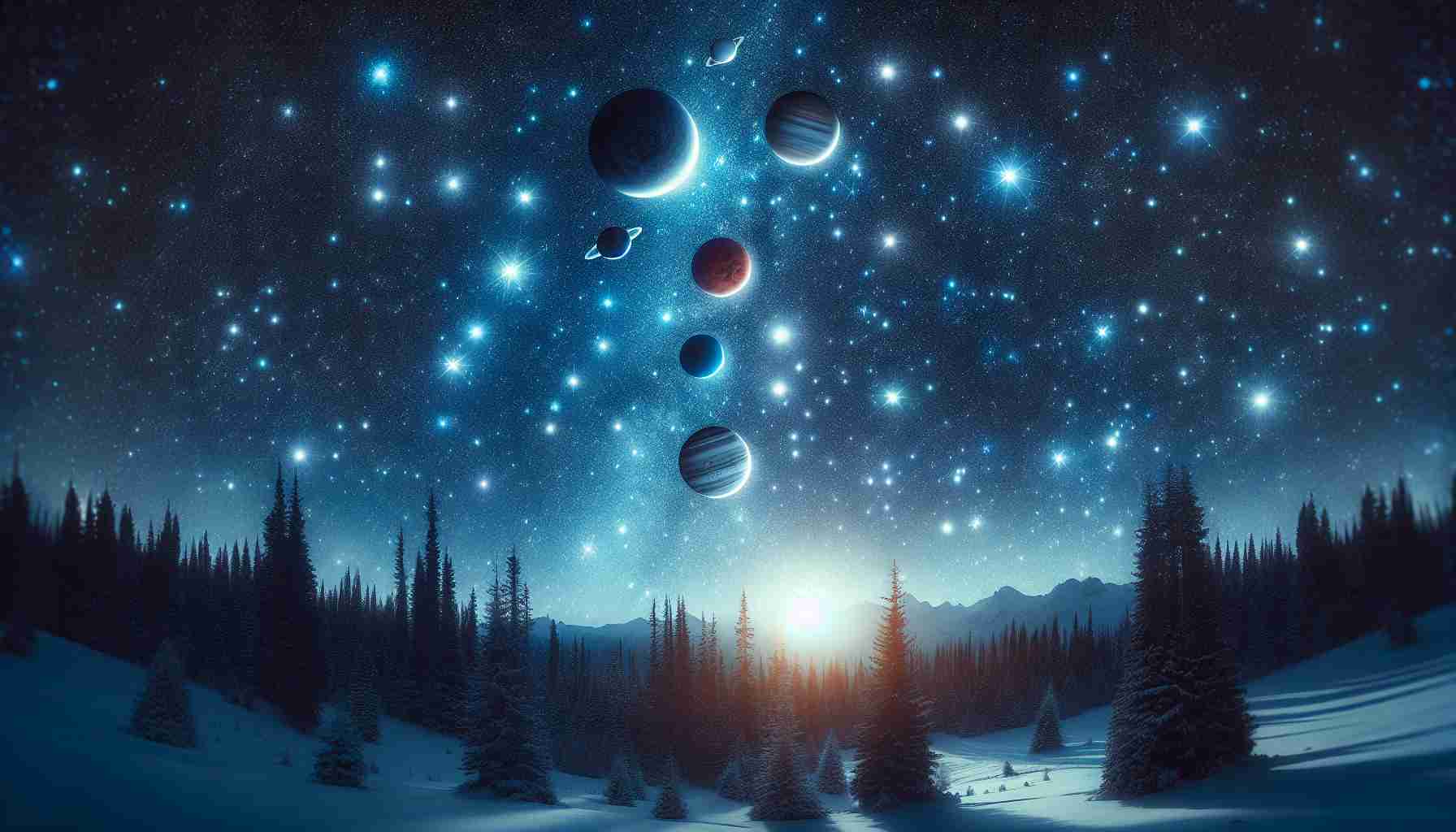Astrophysicists have made groundbreaking advancements in understanding black holes, particularly regarding their fascinating properties like mass and spin. Observations derived from binary black hole mergers through gravitational waves have revealed unexpected findings that challenge previous theories.
Researchers face a curious dilemma: theoretically, there should be a mass gap for black holes emerging from massive stars due to instability during their formation process. Strikingly, data shows black holes existing within this mass range, leading scientists to propose a new explanation. The merging of smaller black holes in dense star clusters may lead to the formation of larger black holes that fill the supposed gap.
Recent studies, notably from a team at Cardiff University, have meticulously analyzed the spin distributions of 69 black hole mergers. What they uncovered is astonishing: there’s a distinct shift in spin characteristics as the mass of black holes increases, further supporting the hierarchical merging theory.
Understanding black hole spin is vital, as it serves as a crucial indicator of their formation history. These studies have implications beyond mere numbers; they indicate that many black holes likely arose from dynamic interactions rather than isolated stellar evolution.
As future gravitational wave observatories like the Einstein Telescope come online, we anticipate deeper insights into how these captivating cosmic giants evolve. The mystery of their origins continues to unfold, reshaping our cosmic narrative.
The Cosmic Connection: Black Holes and Their Wider Implications
The exploration of black holes is not just a niche pursuit within astrophysics; it holds significant implications for society and culture, as our understanding of these enigmatic entities influences our worldview. As scientists unravel the complexities of black hole formation and evolution, we are reminded of our place in the universe and the potentially limitless frontiers of knowledge. The idea that black holes form from the collisions of smaller entities reflects a broader truth about interconnectedness, resonating with cultural narratives about the importance of relationships and community.
From an economic perspective, the burgeoning field of gravitational wave astronomy encourages investment in cutting-edge technologies and research initiatives. The advent of facilities like the Einstein Telescope is likely to spur job creation and economic growth in sectors related to technology, engineering, and data analysis. Furthermore, as nations vie for leadership in space research, collaborative international efforts can stimulate diplomatic relationships and cultural exchange.
However, the excitement of discovery must be tempered with an awareness of environmental considerations. While the direct effects of black hole research on Earth may seem negligible, the broader technological advancements can lead to contingency strategies for climate monitoring and resource management. Innovations arising from gravitational wave technology could eventually be adapted for environmental applications, indicating that fundamental research can have beneficial side effects.
As we peer into the fabric of spacetime, we stand at the brink of a new era in understanding the cosmos, signaling profound long-term significance for both scientific inquiry and humanity’s quest to understand our universe.
Unlocking the Mysteries of Black Holes: Recent Breakthroughs and Future Insights
New Findings in Black Hole Research
Astrophysicists have achieved remarkable advancements in the understanding of black holes, particularly their intriguing characteristics such as mass and spin. Recent observations from binary black hole mergers detected through gravitational waves have revealed unexpected results that challenge longstanding theoretical frameworks.
The Mass Gap Dilemma
One of the most compelling issues that researchers encounter is the existence of a mass gap for black holes formed from massive stars. Theoretical models suggest that during formation, instability prevents certain mass ranges of black holes from existing. However, captivating observational data indicates that black holes fall within this range, prompting scientists to explore alternative explanations. One promising hypothesis suggests that the merging of smaller black holes in densely packed star clusters could create larger black holes, effectively populating the previously assumed ‘gap.’
Spin Distribution Insights
A significant study by researchers at Cardiff University focused on analyzing the spin properties of 69 black hole mergers. Their findings depict an intriguing pattern: as black hole mass increases, there is a noticeable shift in spin characteristics. This observation supports the hierarchical merging theory, which posits that many black holes are formed through dynamic interactions rather than solitary stellar evolution. Understanding black hole spin is crucial as it serves as a key indicator of their formation history and evolutionary pathways.
The Future of Black Hole Research
As we look ahead, upcoming gravitational wave observatories such as the Einstein Telescope are expected to enhance our comprehension of black holes significantly. These advancements will facilitate more detailed observations and a deeper understanding of how these enigmatic cosmic entities evolve over time. The ongoing research is not just about refining existing models; it is reshaping our cosmic narrative and challenging our perceptions of the universe’s fundamental components.
Pros and Cons of Current Black Hole Theories
Pros:
– Revolutionary insights into black hole formation and evolution.
– Enhanced understanding of gravitational wave emissions and their implications for cosmology.
– Potential for new physics that may redefine astrophysical models.
Cons:
– Theoretical frameworks continue to be challenged by new data, leading to potential instability in existing models.
– Increased complexity in understanding the dynamics of dense star clusters and their influence on black hole formation.
Insights and Predictions
Continued research into black holes is likely to unravel more complexities surrounding dark matter, the nature of singularities, and the fundamental laws governing our universe. Researchers predict a forthcoming alignment of observational evidence that may lead to a theoretical overhaul in black hole physics.
Conclusion
The frontier of black hole research is ever-expanding, fueled by technological innovations and groundbreaking studies. As scientists continue to piece together the puzzle of black hole formation and evolution, the implications stretch far beyond mere curiosity, touching upon the very fabric of cosmic understanding.
For more information on astrophysics and related topics, visit NASA.



















